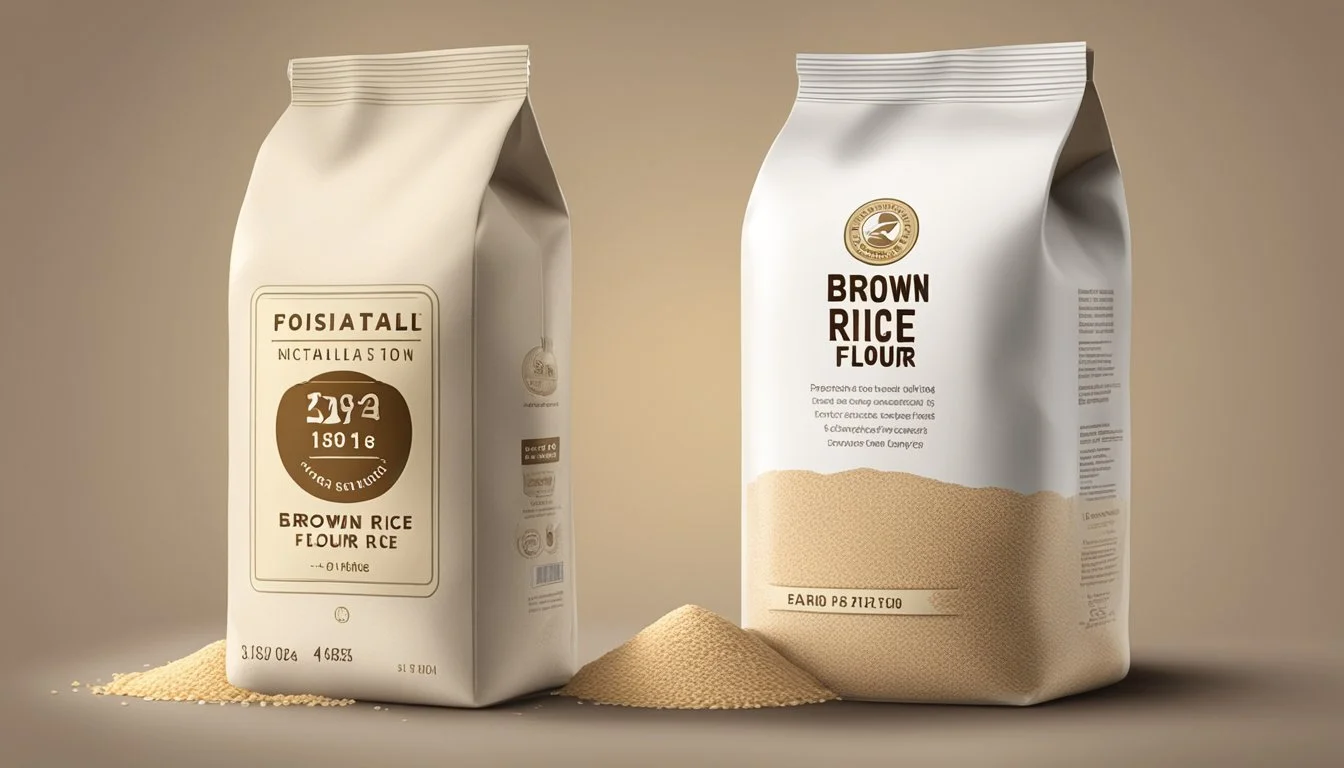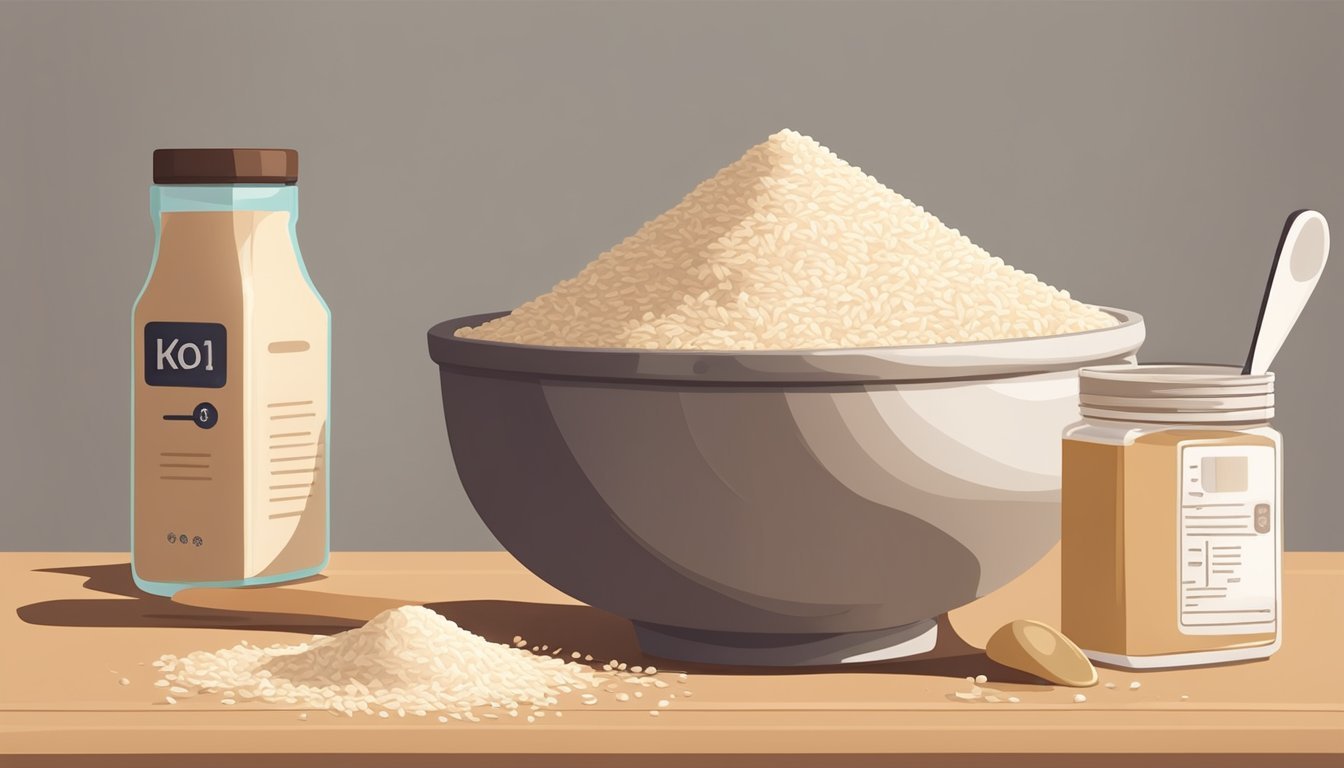Does Brown Rice Flour Go Bad?
Shelf Life and Storage Tips
Brown rice flour, a popular gluten-free alternative to traditional wheat flour, has its own unique storage needs and shelf life. Yes, brown rice flour does go bad, and it's essential to be aware of the signs of spoilage to ensure you're using fresh, safe ingredients. Unlike white rice flour, brown rice flour contains the bran and germ layers of the rice kernel, which are rich in oils that can become rancid over time.
The shelf life of brown rice flour largely depends on how it is stored. Unopened brown rice flour generally lasts 1-2 years if kept in a cool, dry place, but once opened, its lifespan can significantly decrease. Exposure to air, light, and heat can accelerate spoilage, making proper storage crucial. Sealed containers and refrigeration can help extend its usability.
Signs that brown rice flour has gone bad include discoloration, clumping, and a sour or rancid odor. Fresh brown rice flour should have a mild, nutty aroma and smooth texture. Being vigilant about these indicators will help you maintain the quality and safety of your baking supplies.
Understanding Brown Rice Flour
Brown rice flour retains the bran and germ of the rice grain, offering higher nutritional value but also making it more prone to spoilage. Comparing it to other types of rice flour reveals important differences in composition and health benefits.
Composition and Nutritional Value
Brown rice flour is derived from whole grain rice, which includes the bran, germ, and endosperm. These components contribute to its higher nutrient content compared to white rice flour and all-purpose flour. Key nutrients include:
Fiber: The bran provides dietary fiber, beneficial for digestive health.
Vitamins: Rich in B vitamins, essential for energy metabolism.
Minerals: Contains magnesium, phosphorus, and iron, supporting overall health.
The oils in the bran and germ make it susceptible to rancidity, affecting shelf life. Its gluten-free nature makes it a popular choice for those with gluten intolerance or celiac disease.
Comparing Rice Flour Types
Brown rice flour, white rice flour, and all-purpose flour offer distinct properties. White rice flour lacks the bran and germ, leading to a finer texture but lower nutritional value. In contrast, brown rice flour provides more fiber and nutrients but has a shorter shelf life due to its oil content.
All-purpose flour, made from wheat, contains gluten, making it unsuitable for gluten-free diets. Brown rice flour, as a gluten-free alternative, is ideal for those avoiding gluten.
Whole wheat flour includes more nutrients than white all-purpose flour because it retains the grain's bran and germ. Despite this, brown rice flour remains the favored choice among gluten-free options due to its nutritional profile and versatility in cooking and baking.
Shelf Life and Spoilage
Brown rice flour has a limited shelf life due to the presence of oils from the bran and germ layers. Proper storage and timely usage are key to maintaining its freshness and avoiding spoilage.
Expiration Date and Freshness Indicators
Brown rice flour typically has a shelf life of 6 to 12 months when unopened and stored in a cool, dry place. The best-by date on the packaging is a good indicator of its freshness. Expired flour may still be safe to use, but its quality and nutritional value diminish over time.
Fresh brown rice flour should have a mild, nutty aroma. If stored in airtight containers, it can extend its shelf life slightly. Once opened, transferring the flour to an airtight container and storing it in the refrigerator can further help maintain freshness.
Detecting Spoilage
Signs of spoilage in brown rice flour include changes in smell, color, and texture. Rancid flour often emits a sour or musty odor, unlike the nutty fragrance of fresh flour. Any visible mold growth or discoloration is an immediate indicator of spoilage.
Additionally, spoiled flour may appear lumpy or gritty, as opposed to its usual smooth texture. Consuming spoiled brown rice flour can pose health risks due to potential bacteria and mycotoxins. Regularly checking for these signs can help ensure the flour is safe to use.
Proper Storage Techniques
Proper storage of brown rice flour ensures its longevity and maintains its quality. It is crucial to keep it away from moisture, air, and varying temperatures. Both pantry storage and refrigeration/freezing methods have specific steps to follow.
Optimal Storage Conditions
Brown rice flour should ideally be stored in a cool, dry place, away from light and heat. Using an airtight container prevents exposure to moisture and air, which can lead to spoilage.
Pantry storage is suitable if the space is consistently cool and dark. In a pantry or cupboard, the flour can remain fresh for up to 6 months. Labeling the container with the purchase or expiration date helps track freshness.
Refrigeration and Freezing
For longer storage, brown rice flour can be kept in the fridge or freezer. When freezing, seal the flour in an airtight container or freezer bag to protect against moisture and humidity.
Label the container with the date of freezing to monitor freshness. Upon thawing, allow the flour to reach room temperature and give it a gentle stir to restore its texture. Refrigerating or freezing significantly extends the shelf life, allowing the flour to last for up to a year.
Incidence and Prevention of Contamination
Brown rice flour is susceptible to contamination from mold, insects, and harmful bacteria due to its natural oils and high moisture content. Proper storage practices are essential to maintain its quality and prevent health hazards.
Preventing Mold and Insect Infestation
Proper storage conditions are critical to preventing mold and insect infestations in brown rice flour. Store the flour in airtight containers to limit exposure to moisture and air. Keep these containers in a cool, dry place, away from direct sunlight which can accelerate spoilage.
Temperature control is also vital. Storing flour in the refrigerator or freezer can significantly extend its shelf life by inhibiting mold growth and deterring insects.
Regular inspection is important. Check for clumping, discoloration, and an off smell which are indicators of mold growth or insect presence. Promptly dispose of any flour showing these signs to avoid cross-contamination.
Health Implications of Contaminated Flour
Consuming contaminated brown rice flour can lead to various health issues. Mold can produce mycotoxins, which are harmful compounds that pose serious health risks including allergic reactions and respiratory problems.
Insect infestation can introduce pests and bugs into the flour, potentially carrying harmful bacteria. This bacterial contamination can lead to foodborne illness, causing symptoms such as nausea, vomiting, and diarrhea.
Proper prevention and storage not only maintain the freshness of brown rice flour but also ensure food safety and protect against health hazards associated with contaminated products. Regular assessments are essential to ensure the flour remains safe for consumption.
Usage Tips for Brown Rice Flour
Brown rice flour is a versatile ingredient in many recipes, from baking to thickening sauces. Proper storage and handling can help maintain its flavor and quality.
Baking and Cooking with Brown Rice Flour
Brown rice flour adds a nutty flavor and slightly gritty texture to baked goods. It works well in recipes like pancakes, muffins, and cookies. For best results, use it in combination with other gluten-free flours such as tapioca or almond flour.
When using brown rice flour for thickening sauces, whisk it into a small amount of cold liquid before adding it to the hot mixture to prevent clumping. This method ensures a smooth, even consistency.
Not sure where to start? Try adding a mix of brown rice flour to pancake batter. It creates a fluffy texture while enhancing the pancake’s flavor profile. Additionally, its high nutrient content makes it a healthier substitution for white rice flour.
Maintaining Quality and Flavor in Dishes
Proper storage is crucial to maintain the quality and flavor of brown rice flour. Store unopened bags in a cool, dry place, such as a pantry. Once opened, keep the flour in an airtight container to protect it from moisture and air. For longer shelf life, refrigerate or freeze.
Since brown rice flour contains natural oils, it can become rancid over time. To maximize freshness, use the flour within six months of opening.
Checking the flour’s freshness is easy: look for changes in color, texture, or smell. Discard any flour that appears discolored or has a sour odor, as these are signs of spoilage. Keeping these tips in mind will help you maintain the best taste and quality in your dishes.
Recognizing and Handling Expired Products
Brown rice flour tends to spoil faster than white rice flour. Identifying when it has gone bad and safely disposing of it are crucial to ensure health safety.
Signs of An Expired Rice Flour
Brown rice flour has an inherent expiration risk due to its oil content from the bran and germ. Noticeable signs of spoilage include:
Discoloration: Fresh brown rice flour appears off-white to light tan, while expired flour may darken or show spots.
Texture Changes: The flour should be fine and smooth. Clumping, lumpiness, or a gritty texture can indicate spoilage.
Odor: Fresh flour has a mild, nutty aroma. A rancid, sour, or musty smell suggests it has gone bad.
Visible Mold: Any sign of mold, even minor, signals expiration and health risks.
Responsible Disposal and Safety Concerns
Proper disposal of expired rice flour is necessary to avoid contamination. Discard old flour in a sealed bag or container to prevent mold spores from spreading. Dispose of it in a trash bin away from other foods.
Using expired rice flour can pose health risks like food poisoning caused by bacteria such as Salmonella or E. coli. Mycotoxins from mold, such as aflatoxins, present serious health hazards. It’s crucial to handle expired products with care to prevent these risks.
Lifestyle and Wellness Considerations
Incorporating brown rice flour into a diet can have several lifestyle and wellness benefits.
Brown rice flour is gluten-free and suitable for those with gluten intolerance or celiac disease. This makes it an excellent option for individuals aiming to avoid gluten in their diet.
It is rich in fiber, which can aid digestive health and support weight management. The fiber content also contributes to a feeling of fullness, which may help control overeating.
For those who enjoy outdoor activities, such as hiking, brown rice flour can be a valuable ingredient in homemade energy bars and snacks. Its complex carbohydrates provide a sustained energy release, essential for long treks.
Individuals with a Bachelor of Science in nutrition or dietetics often recommend brown rice flour due to its higher nutrient content compared to white rice flour. It contains beneficial compounds like vitamins, minerals, and antioxidants.
Given the increasing awareness around wellness, many writers and influencers emphasize the importance of incorporating diverse, nutrient-dense foods into one’s diet. Brown rice flour aligns well with this approach.
While beneficial, it's important to store brown rice flour properly. Exposure to air, light, and heat can cause it to go rancid. Using airtight containers and keeping it in cool, dark places can extend its shelf life, contributing to a healthier lifestyle.
In summary, integrating brown rice flour into recipes can enhance dietary quality and support various wellness goals.








